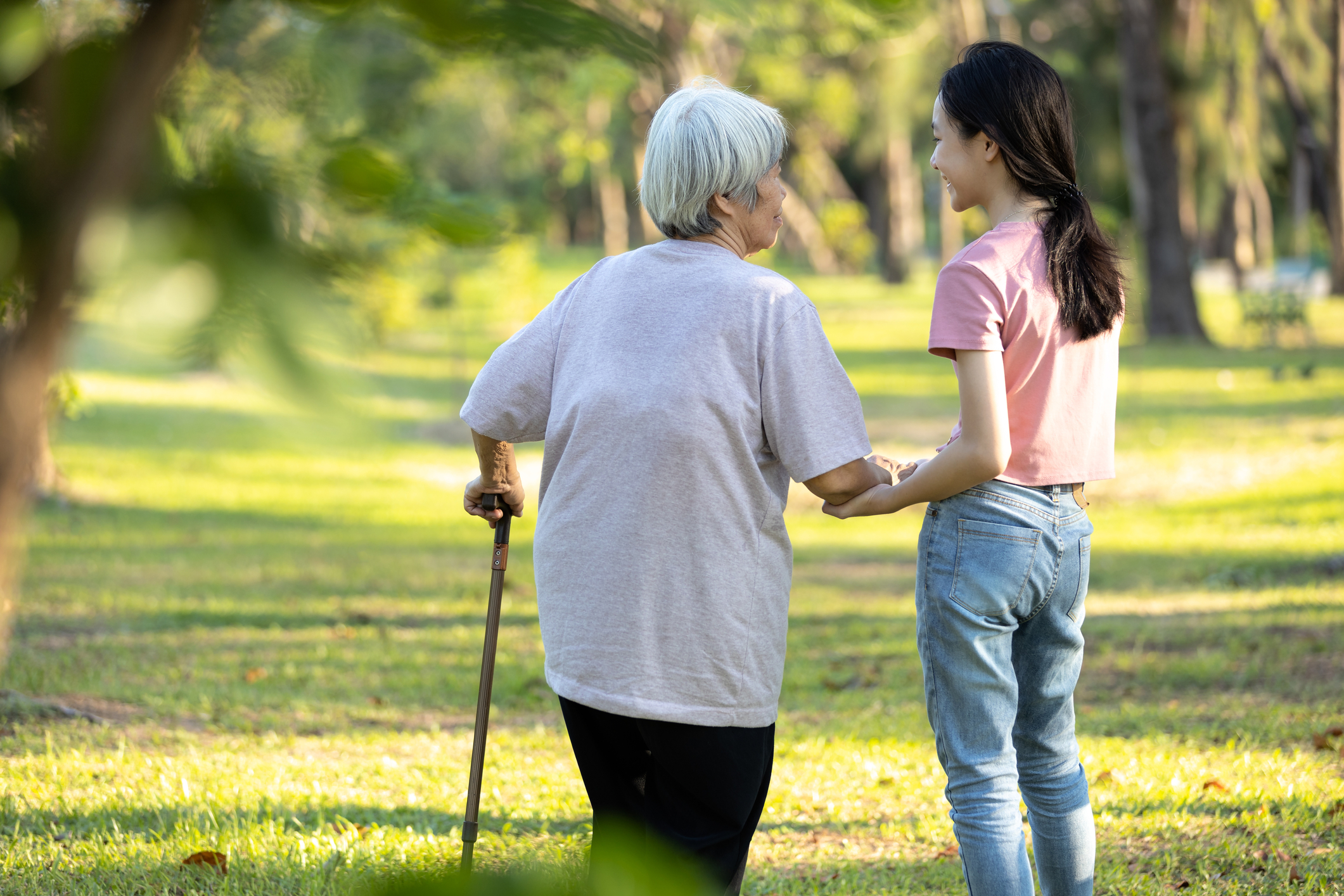Fall Recovery Guide for Seniors

Falls are a leading cause of both injury and death for older adults in the United States. According to the Centers for Disease Control and Prevention (CDC), ERs in the US receive roughly 3 million visits from senior-related falls a year. That makes fall recovery a major public health concern.
Do you have a family member recovering from a fall? If so, keep reading to learn more about the recovery process, how to make the process easier for your entire family, and tips on how to make falls less likely to occur again in the future.
Top 2 Fall Recovery Techniques
The most immediate step to take after a fall is to get up and get help, which is unfortunately easier said than done. Part of what makes falls so devastating for seniors is that they simply can't get up after a fall. That being said, there are fall-rise techniques someone can use after a fall that make getting up and getting help easier.
Sequential Method
This traditional fall recovery technique can teach someone how to move from lying face-up on the floor (supine) to a standing position. Physical therapists often teach it during sessions to help patients learn how to get up after a fall, as well as build the strength and balance necessary to do so.
To successfully execute this method, someone performs the following steps:
- From a supine position, roll into a side-lying position with one arm extended and supporting the body.
- From there, push into a side-sitting position (both legs pointing to the same side while the knees are bent) using the other arm.
- From there, move onto the hands and knees (prone kneeling position).
- If not near a sturdy surface, crawl to a wall or piece of furniture that can support bodyweight.
- Use the sturdy surface to push onto the knees only (high kneel), removing the hands from the ground.
- Move to a half-kneeling position, where one foot is on the ground while the other knee remains on the ground. Do so while using the sturdy surface for support the entire time.
- From the half-kneeling position, push up into a standing position. If it is not possible, move to a seated position first, then move to standing.
- Rest for several minutes before checking for injuries.
- Call for help using a cell phone or medical alert system.
Backward Chaining
The backward-chaining method is an effective method of teaching people how to recover from a fall. It is so named because it starts with someone in a standing or seated position and ends with them on the ground, with the person only moving on to the next step in the process after they have mastered the previous step first. Backward chaining is a popular recovery in physical therapy because it breaks down the process of getting up from a fall into smaller, more manageable steps.
To successfully execute this method, someone performs the following steps:
- Start in a standing position next to a chair or seated in a chair. Move from this starting position to a half-kneeling position, hold, then push back to start. Repeat until this sequence is comfortable. If moving to the floor is not comfortable, use a soft surface like a towel to cushion the joints. Do not move to Step 2 until Step 1 is completed without a towel or similar aid.
- Complete Step 1, so that the new starting position is a half-kneel. From the half-kneel, lower the other leg until reaching a high kneeling position, with both knees on the ground and the upper body off the ground. Hold, then move back to a half-kneel, then move to a seated or standing position. Repeat until this sequence is comfortable.
- Complete the sequence through Step 2, so that the new starting position is a high kneel. From here, move to a prone kneeling position, with both knees and both hands on the ground. Hold, then go back through Steps 2 and 1. Repeat until this sequence is comfortable.
- Complete the sequence through Step 3, so that the new starting position is a prone kneel. From here, move to a side-sitting position, where both legs are pointing to the same side while the knees are bent. Hold, then go back through Steps 3, 2, and 1. Repeat until this sequence is comfortable.
- Complete the sequence through Step 4, so that the new starting position is the side-sit. From here, lower the body to the floor to achieve a side-lying position. Hold, then go back through Steps 4, 3, 2, and 1. Repeat until this sequence is comfortable.
- Complete the sequence through Step 5, so that the new starting position is lying on the side. From here, rotate slowly onto the back with the face up towards the ceiling (supine position). Hold, then go back through Steps 5, 4, 3, 2, and 1. Repeat until this sequence is comfortable.
Warning Signs After a Serious Fall
When the person who has fallen is in a safe location, it's important to check for signs of a serious injury.
- Pupils of differing sizes
- Intense lethargy
- Falling asleep and not waking up
- Severe, unrelenting headache
- Slurred speech
- Impaired coordination
- Intense confusion or aggression
- Losing consciousness
Of course, someone can still require medical attention without having a concussion. Other warning signs to be aware of after a fall include:
- Weak pulse or low blood pressure
- Intense bruising or bleeding
- Severe nausea
- Severe abdominal pain
- Pain that doesn't go away
If someone presents any of these signs or other unusual symptoms or behaviors after a fall, call for emergency medical help right away.
Recovering from a Serious Injury
The recovery process after a major fall looks different for each person based on how serious the fall was and what injuries the person sustained. For example, someone recovering from a hip fracture will have a different recovery plan than someone recovering from a head injury. In both situations, however, it's important to seek the help of licensed medical professionals who can treat immediate concerns and develop a long-term recovery plan.
When recovering from a serious injury after a fall, the following services can be a welcome part of a holistic recovery plan
- Physical therapy. A licensed physical therapist can help someone safely regain strength, balance, and range of motion after a fall that results in a major physical injury like a hip fracture. During this time, someone may practice sequential teaching and the backward-chaining method to gain strength and balance as well as the knowledge of what to do in the event of a future fall.
- Occupational therapy. Occupational therapists can help someone recover and improve someone's ability to perform daily tasks after a major injury. For example, an occupational therapist might have to help someone relearn and refine their fine motor skills after a fall caused by a stroke.
- Speech therapy. Speech therapists help someone improve their ability to communicate verbally. Speech therapists are invaluable in helping people learn and relearn how to speak after falls caused by strokes or that resulted in concussions.
- Respite care. Respite care is care that offers respite for informal caregivers. It gives unpaid caregivers, like spouses and family members, peace of mind that their loved ones are receiving fall recovery training in a safe location from licensed professionals.
- Residential rehabilitation. Institutional rehabilitation refers to rehab services received in a residential setting. The person undergoing rehabilitation lives, for a short time, in a facility optimized to promote recovery. Many older people in the United States, for example, recover from a fall in a skilled nursing care community.
Preventing Future Falls: An Important Piece of the Fall Recovery Process
Having a serious fall can be an overwhelming experience that can affect anyone's confidence. Taking steps to prevent falls from happening again can help someone feel more confident and powerful navigating their day-to-day life.
Ways to reduce the odds of future falls include:
- Improve home safety. Reduce the risk of falling by making the older adult's living space safer. That can mean removing fall hazards like throw rugs, lighting up dimly lit areas to make seeing obstacles easier, and adding aids to improve balance like grab bars in the bathroom.
- Create a balanced exercise program. A well-balanced exercise routine can help someone gain the strength, endurance, and flexibility needed to reduce the risk of falls or make getting up from a future fall easier. A balanced exercise routine should include an emphasis on strength training (e.g., weightlifting), cardio workouts (brisk walks), and balance and flexibility exercises (e.g., tai chi).
- Manage medical conditions. Certain medical conditions can increase the risk of falling, like low blood pressure, osteoporosis, Parkinson's disease, and cataracts. Treating these conditions means reducing the odds of falling.
Fall Recovery in Action at St. Andrew's
Older people face some serious risks from falls, but that doesn't mean they have to live in fear of falling. Learning fall recovery techniques, what signs to look for after a serious fall, and what steps to take after a fall can empower older people to live their lives confidently and safely. And St. Andrew's will be there to help every step of the way.
Further Reading:
Disclaimers: This article is for informational purposes only. It cannot be used to diagnose, treat, cure, or prevent any disease or condition. Please direct any and all medical or other healthcare concerns to a licensed professional.







